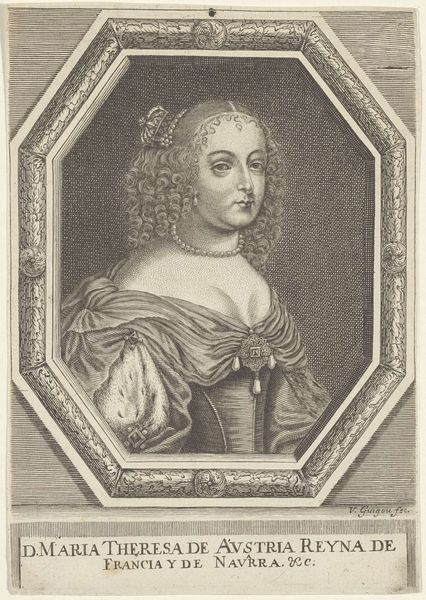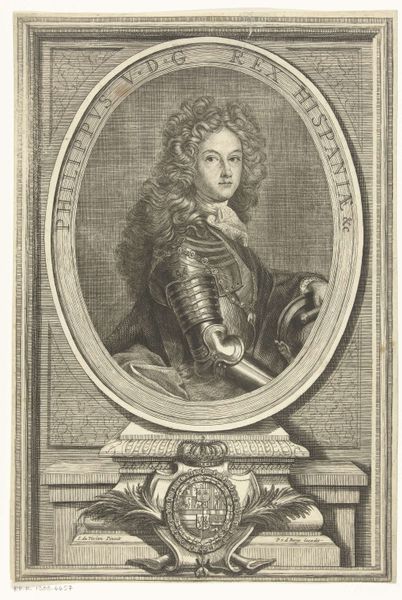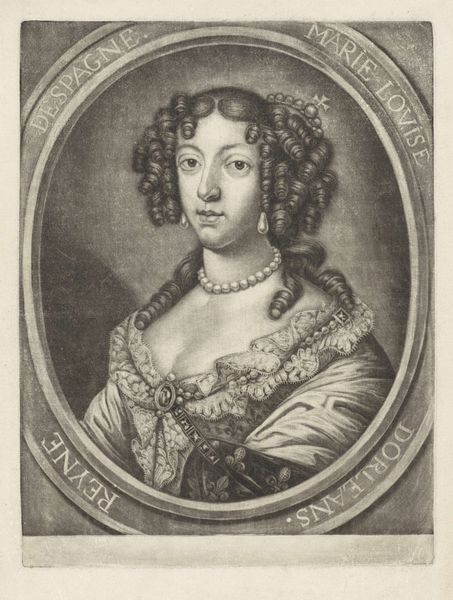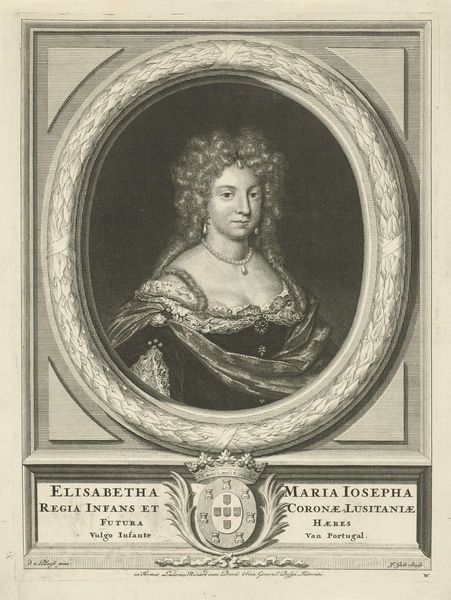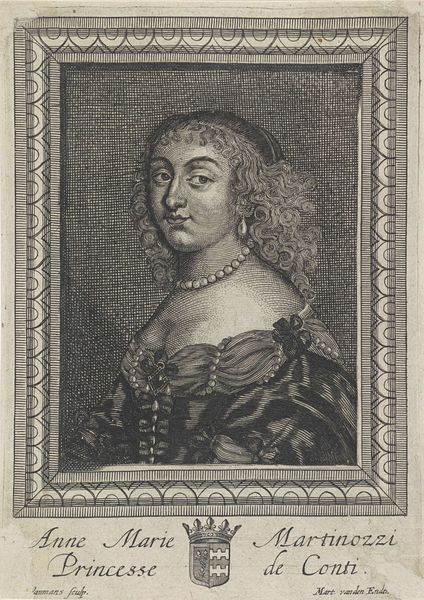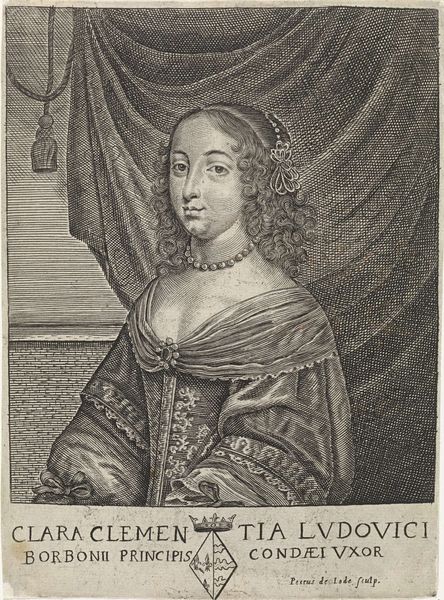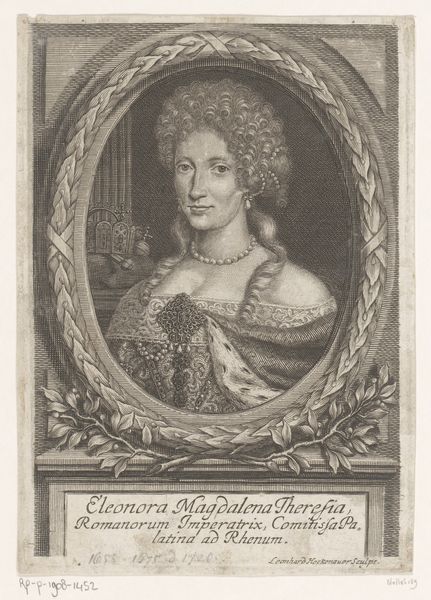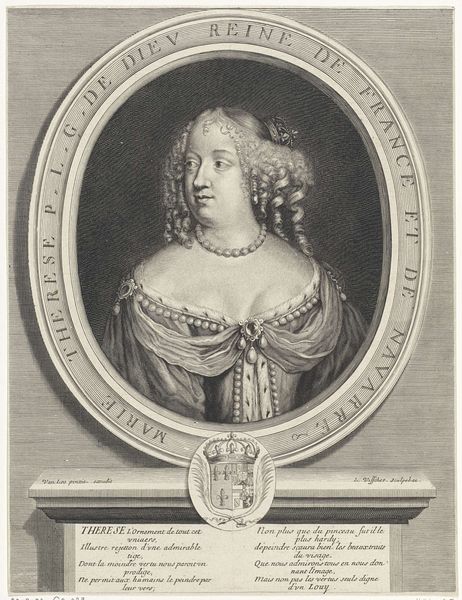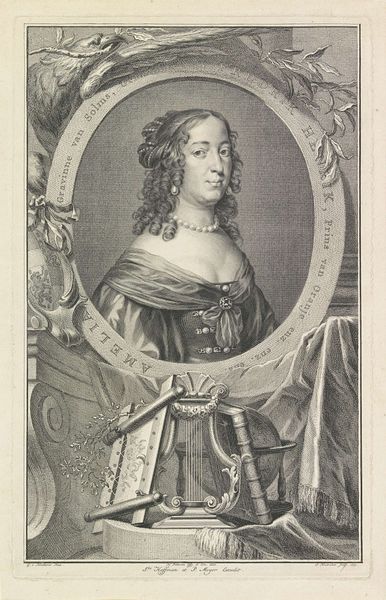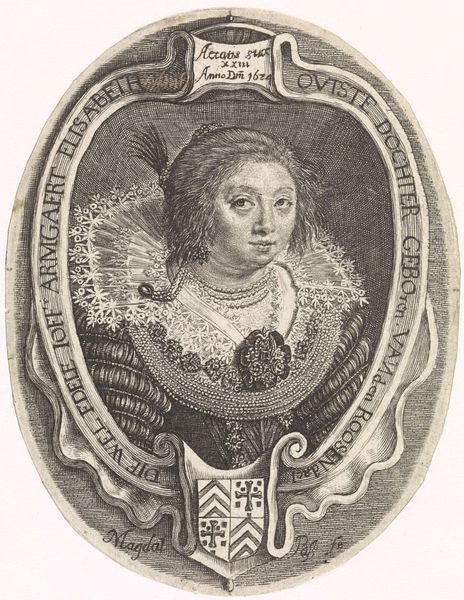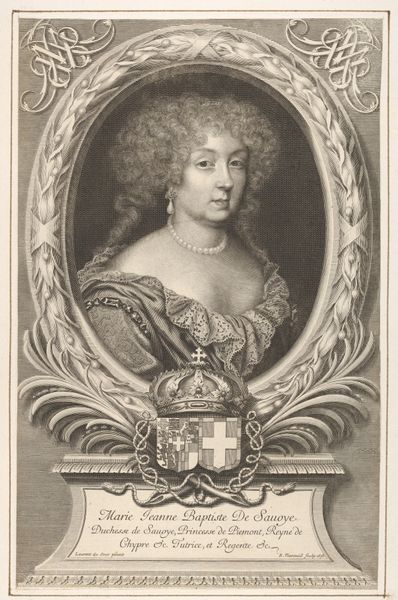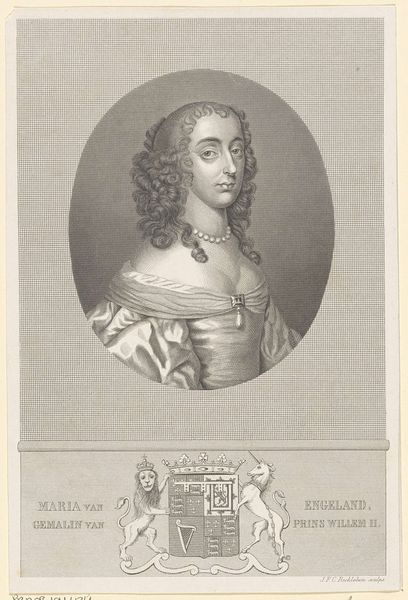
engraving
#
portrait
#
medieval
#
baroque
#
old engraving style
#
history-painting
#
engraving
Dimensions: height 175 mm, width 119 mm
Copyright: Rijks Museum: Open Domain
Curator: This is a portrait of Maria Ludovica Gonzaga, Queen of Poland. The engraving was created between 1628 and 1670 by Pieter de Jode II and is held at the Rijksmuseum. Editor: It strikes me as very formal, almost staged. The sitter is encased in an oval frame with drapery and then more rigid geometry on the background, so you get this interesting mix of softer organic shapes contrasted against structured lines. Curator: The oval framing is classic, wouldn't you agree? It offers a contained space, enhancing the subject’s power. Maria Ludovica has these cascading curls, draped pearls… all symbols designed to visually represent power. Even the drape behind her head reminds me of an opulent canopy. Editor: What interests me most is the process of engraving itself, right? Someone painstakingly etched this image into a copper plate. Think about the time, the pressure, the material decisions…it wasn’t just about aesthetics, but physical labor too. The engraver, De Jode, is really present here. Curator: And rightly so. Consider that this engraving also serves as a cultural artifact. Images of royalty like Maria Ludovica solidified their position, contributing to how society perceived its leaders. Each engraved line, each shadow reinforces these power dynamics. It is propaganda, wouldn't you say? Editor: Well, calling it propaganda feels reductive. There's a value too, in this process of reproduction. The engraving allowed the Queen’s likeness to circulate widely, which wouldn’t have been possible otherwise. Curator: Fair point. Engravings like this had influence, disseminating royal iconography to broader audiences and ensuring continued memory. This imagery and the symbolism helped secure royal legitimacy for centuries to come. Editor: Seeing the fine lines that render fabric texture—knowing that it's achieved with a sharp tool digging into metal makes the piece even more intriguing to me. It brings me to think how prints blur the lines of production between the artist and craftsperson, especially when compared to, let’s say, painted portraiture of the time. Curator: Indeed, there’s a psychological power imbued through repetition. It is amazing how these visual representations served both as conveyors of historical memory, and markers of political power! Editor: For me, seeing those individual etched marks humanizes the Queen in a way that I hadn’t initially expected.
Comments
No comments
Be the first to comment and join the conversation on the ultimate creative platform.
